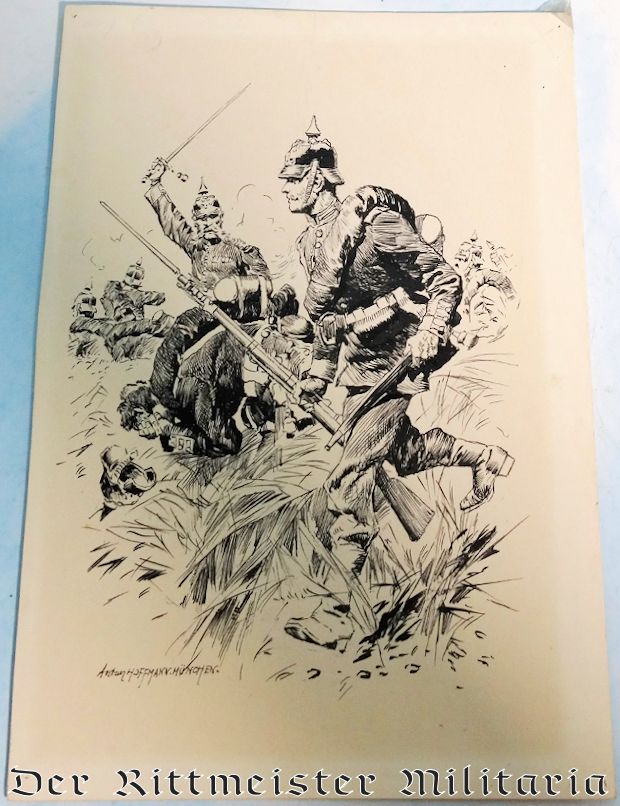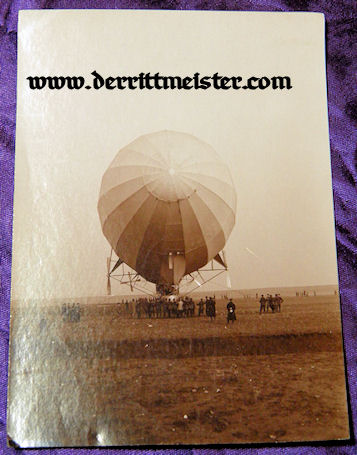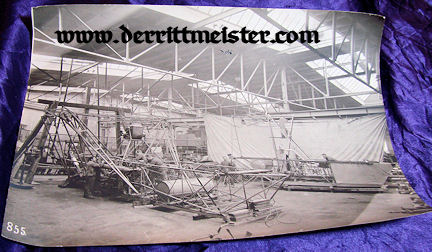Description
This is a pen and ink drawing that highlights a Prussian Infanterie Regiment charge during the 1866 Austro-Prussian War’s Battle of Königgrätz. An officer with his sword drawn urges his troops forward as they attack Austrian positions. All of the soldiers are wearing 1860’s-style pickelhauben, which was shaped differently from the final 1897-style. The Battle of Königgrätz was the Austro-Prussian War’s penultimate battle, effectively ending the very short, sharp war.
The drawing measures 7″ x 10″ and was produced by Bavarian artist/illustrator and university professor Anton Hoffman (1863-1938). [He specialized in history and military paintings, and illustrated many school and history books. He produced a series on the Bavarian Army’s uniforms and is still collected today, particularly among artistic postcards]. Thumb tack or small nail holes appear in the drawing’s corners from a previous attachment to a wall or display board. The firm’s name from which the drawing was purchased and a description of the action appears on its reverse.








